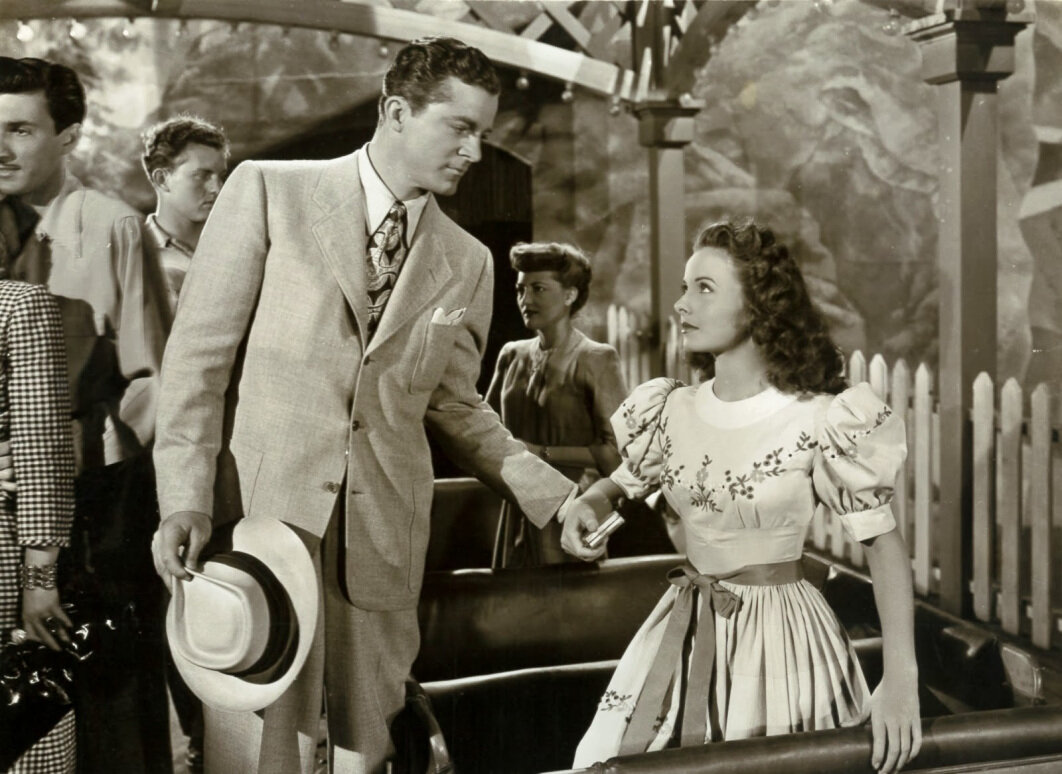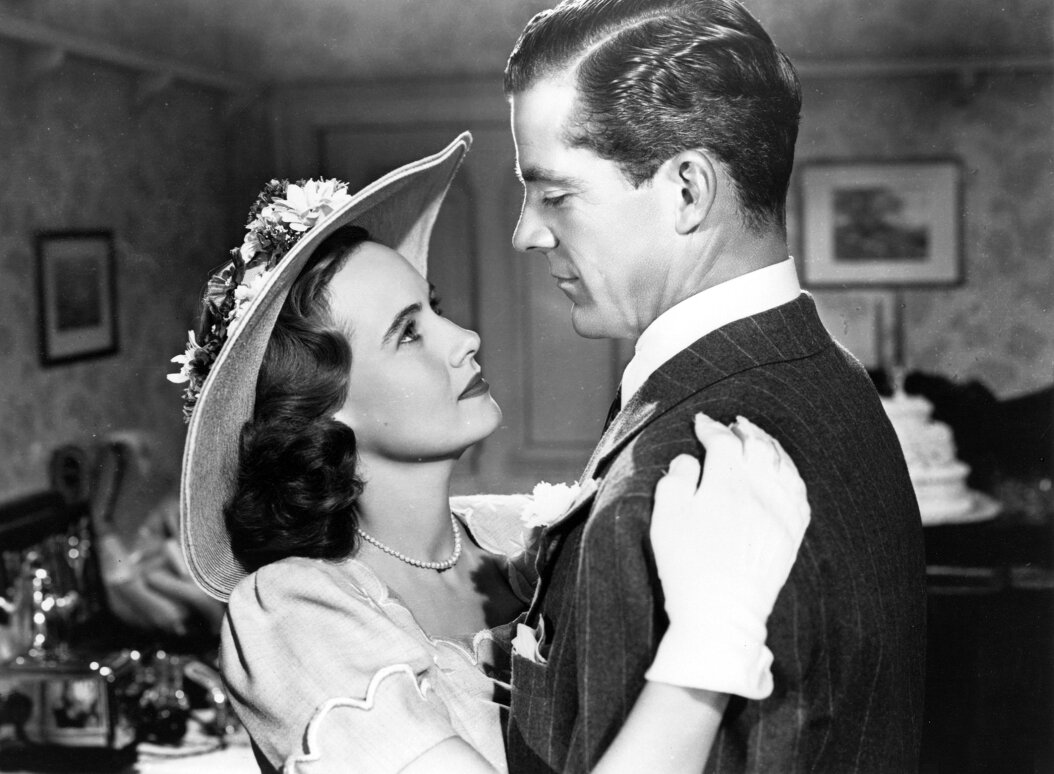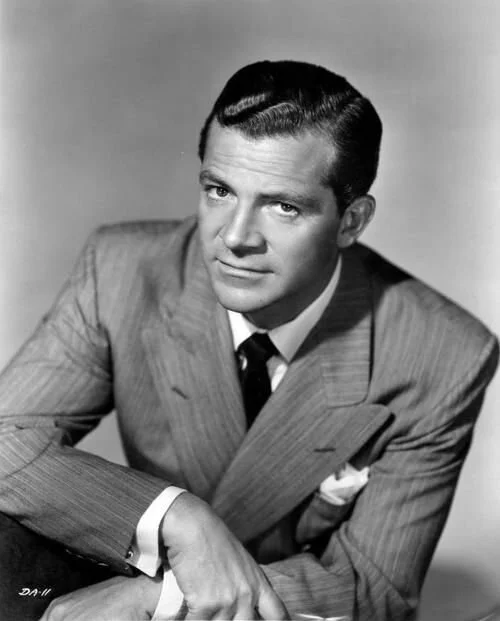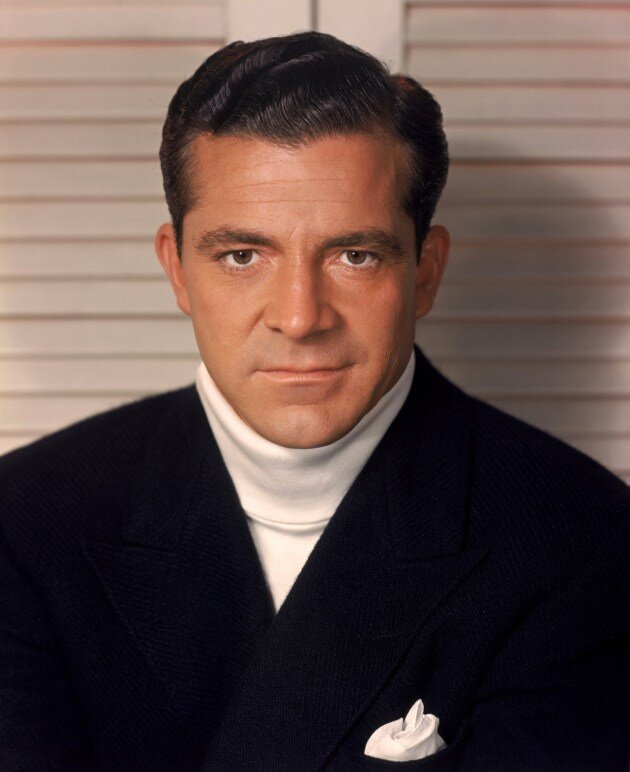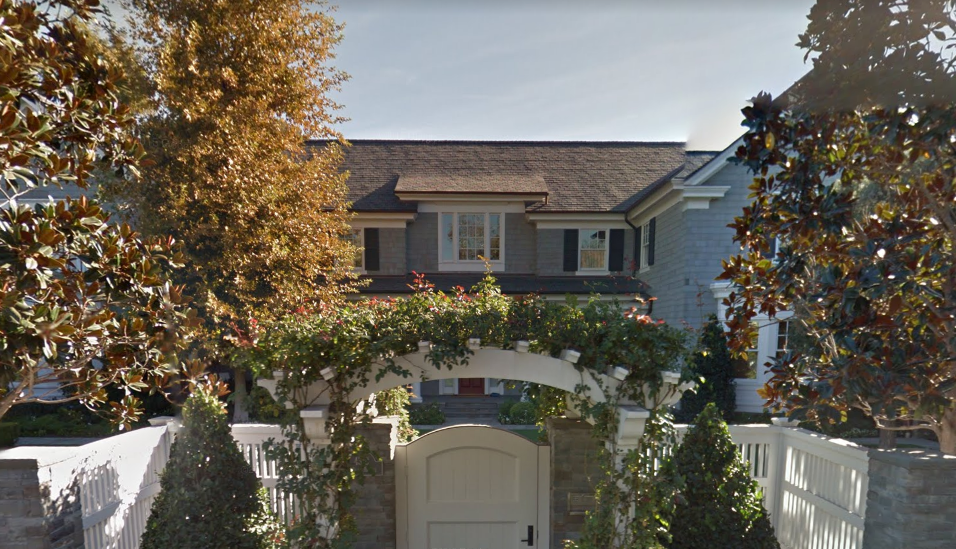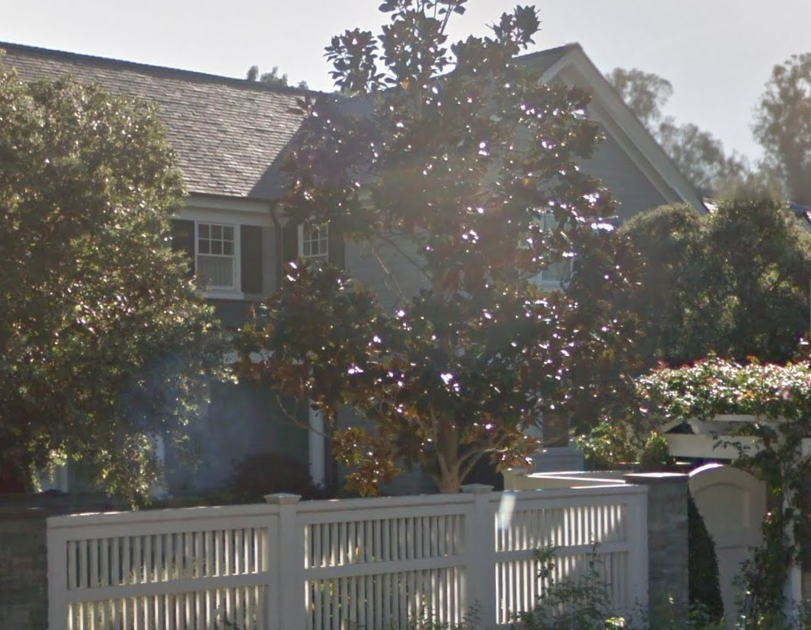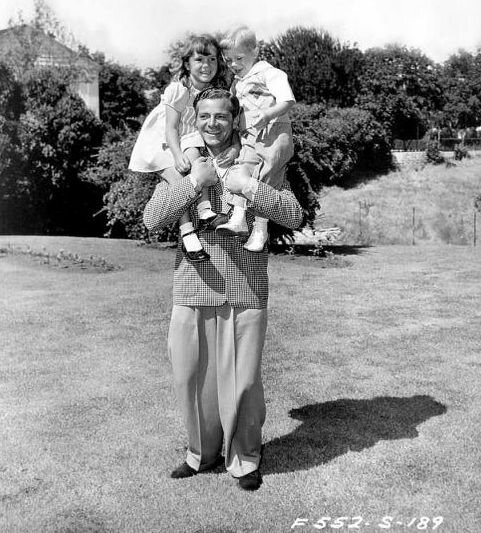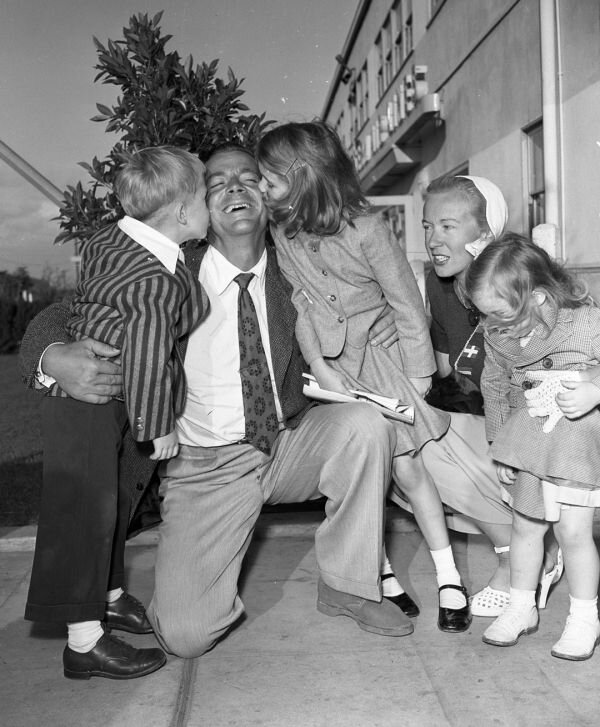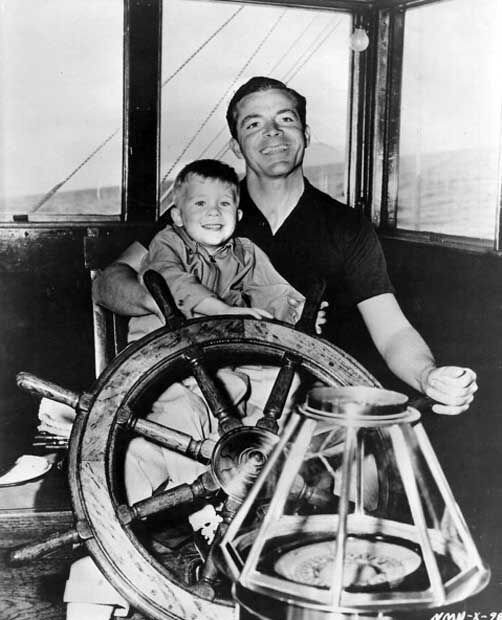Hollywood History in Palos Verdes: Dana Andrews By Annette Bochenek, Ph.D.
Hollywood History in Palos Verdes
By Annette Bochenek, Ph.D.
Dana Andrews was a key Hollywood star throughout the 1940s. Shining as a romantic lead in many dramatic films, Andrews worked with many top actresses of the day. Though he appeared in several notable films, he is most celebrated for offering some of the many moving performances in The Best Years of Our Lives (1946).
Carver Dana Andrews was born to Baptist minister Charles Forrest Andrews and Annis Speed on a farm near Collins, Mississippi, as the third of thirteen children. However, the Andrews family did not remain in Mississippi, as they later relocated to Huntsville, Texas, where his younger siblings were born, including future actor Steve Forrest.
Andrews was educated at Sam Houston State University in Huntsville, where he studied business administration. Prior to graduating, he worked as a bookkeeper for Gulf Oil. With the Great Depression in full swing, Andrews decided it was time to seek additional opportunities.
In 1931, he traveled to Los Angeles, California, to find work as a singer. There, he worked many odd jobs, which included driving a school bus, digging ditches, picking oranges, stock work, and pumping gas. However, his gas station employer saw promise in Andrews and offered him $50 per week to help him study, in exchange for a five-year share of any potential future earnings. As a result, Andrews was able to study opera and study at the Pasadena Community Playhouse’s theatre company and drama school. While at Pasadena Community Playhouse, he appeared in many plays, even appearing opposite Robert Preston in a play about composers Gilbert and Sullivan.
While at the Pasadena Community Playhouse, Andrews met Janet Murray. They married in 1932 and had a son named David, who went on to become a musician and composer. Tragically, Murray died of pneumonia in 1935.
By 1939, Andrews married actress Mary Todd. The couple had three children named Katharine, Stephen, and Susan, and lived in Toluca Lake, California.
Andrews’s career would advance shortly thereafter with a contract offer from Samuel Goldwyn. He was then cast in his first film role in Lucky Cisco Kid (1940) at 20th Century Fox. His first appearance for Goldwyn occurred in The Westerner (1940) with Gary Cooper.
20th Century Fox took an interest in Andrews, especially because he was not featured in Goldwyn films very often. As a result, he shared his contract with 20th Century Fox and enjoyed supporting roles in films like Tobacco Road (1941), Belle Starr (1941) with Gene Tierney, and Swamp Water (1941). He also appeared in Ball of Fire (1941) for Goldwyn, once again working with Cooper.
It was 20th Century Fox that offered Andrews his first lead role in Berlin Correspondent (1942). Later, he would be the second lead to Tyrone Power in Crash Dive (1943), followed by The Ox-Bow Incident (1943) with Henry Fonda. He returned to Goldwyn, where he worked on a propaganda film entitled December 7th: The Movie (1943), followed by Up in Arms (1944) with Danny Kaye. He then returned to 20th Century Fox for The Purple Heart (1944) and Wing and a Prayer (1944).
While he starred in many wartime dramas, he notably portrayed a detective in Laura (1944), alongside Gene Tierney. Soon after Laura, Andrews worked with Jeanne Crain in the film musical, State Fair (1945). The film was a major hit, though the studio was unaware of Andrews’s experience as a singer. As a result, Andrews was dubbed by Ben Gage. According to Andrews, he did not correct the studio’s oversight because he did not want to take the work opportunity away from Gage.
Andrews’s appearance in State Fair was followed by additional war films and a Western, but his most famous role came shortly thereafter. Working with Director William Wyler for Goldwyn, Andrews offered a highly successful performance in The Best Years of Our Lives. By 1947, Andrews was voted the most popular actor in the United States.
Though Andrews continued appearing in more dramatic films, his alcoholism began to impact his career. To make matters worse, his next few films in the 1950s were flops. These films included Sealed Cargo (1951), the only film he made with his brother, and I Want You (1951), an unsuccessful attempt to reimagine the success of The Best Years of Our Lives. While Andrews also worked on radio, his film career waned.
In the mid-1950s, Andrews appeared in mostly B-movies, though a handful of films he made under the direction of Fritz Lang as well as Jacques Tourneur received positive reviews. Before offering a performance on Broadway in Two for the Seesaw, Andrews also appeared in Spring Reunion (1957), Zero Hour! (1957), and Enchanted Island (1958).
Eventually, Andrews addressed his alcohol habit and worked frequently with the National Council on Alcoholism and Drug Dependence, even appearing on a televised public service announcement regarding the issue. At the same time, he actively pursued television roles on a wide range of talk shows and serials. He continued to make films, albeit carrying out mostly supporting roles, and was even elected president of the Screen Actors Guild in 1963.
By the 1970s, Andrews continued working in television but also experimented with another business—real estate. After reading a how-to book on the subject, he and a friend partnered and built an apartment building in Garden Grove, California.
In the last few years of his life, Andrews suffered from Alzheimer’s disease. Due to the effects of the disease, he moved into the John Douglas French Center for Alzheimer’s Disease in Los Alamitos, California. Andrews passed away from congestive heart failure and pneumonia on December 17, 1992.
Today, few places of relevance to Andrews exist. While he is documented as having lived in Mississippi and Texas, his residences no longer stand. Additionally, the John Douglas Center for Alzheimer’s Disease is no longer in operation. However, in California, his properties on 4310 Arcola Avenue in Toluca Lake and 43 Oceanaire Drive in Rancho Palos Verdes still stand.
43 Oceanaire, Rancho Palos Verdes, CA
Andrews is best remembered for the body of work he left behind and is well worth celebrating by classic film fans
Images courtesy of: Hometowns to Hollywood
Bio:
Annette Bochenek, Ph.D. is an archivist, film historian, and avid scholar of Hollywood’s Golden Age. She manages the Hometowns to Hollywood blog, in which she profiles her trips to the hometowns of classic Hollywood stars. She also hosts a film series by the same name. She has been featured on Turner Classic Movies and is president of the Windy City Film Fanatics. A regular columnist for Turner Classic Movies, Classic Movie Hub and Silent Film Quarterly, her articles have also appeared in Nostalgia Digest, The Dark Pages Film Noir Newsletter, and Chicago Art Deco Society Magazine.

